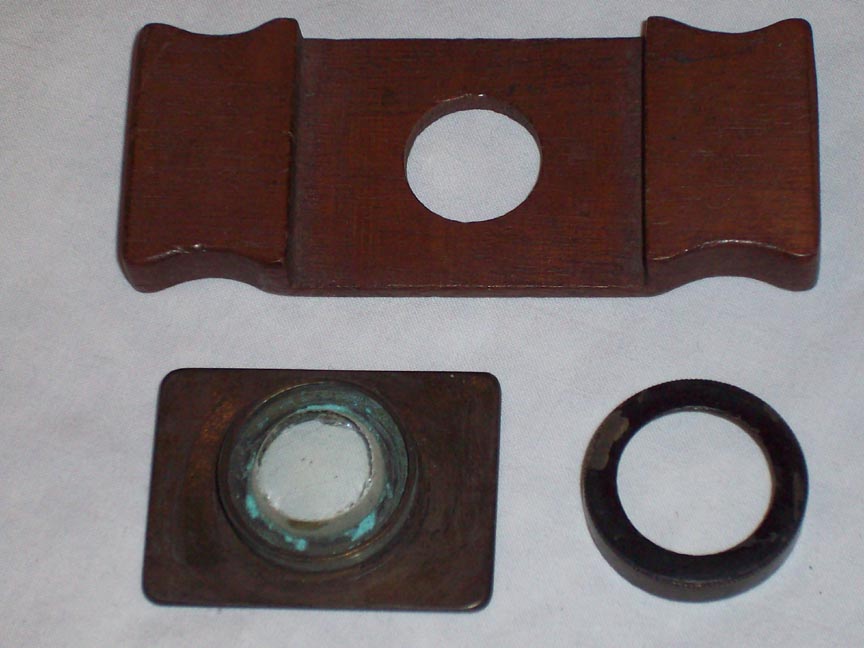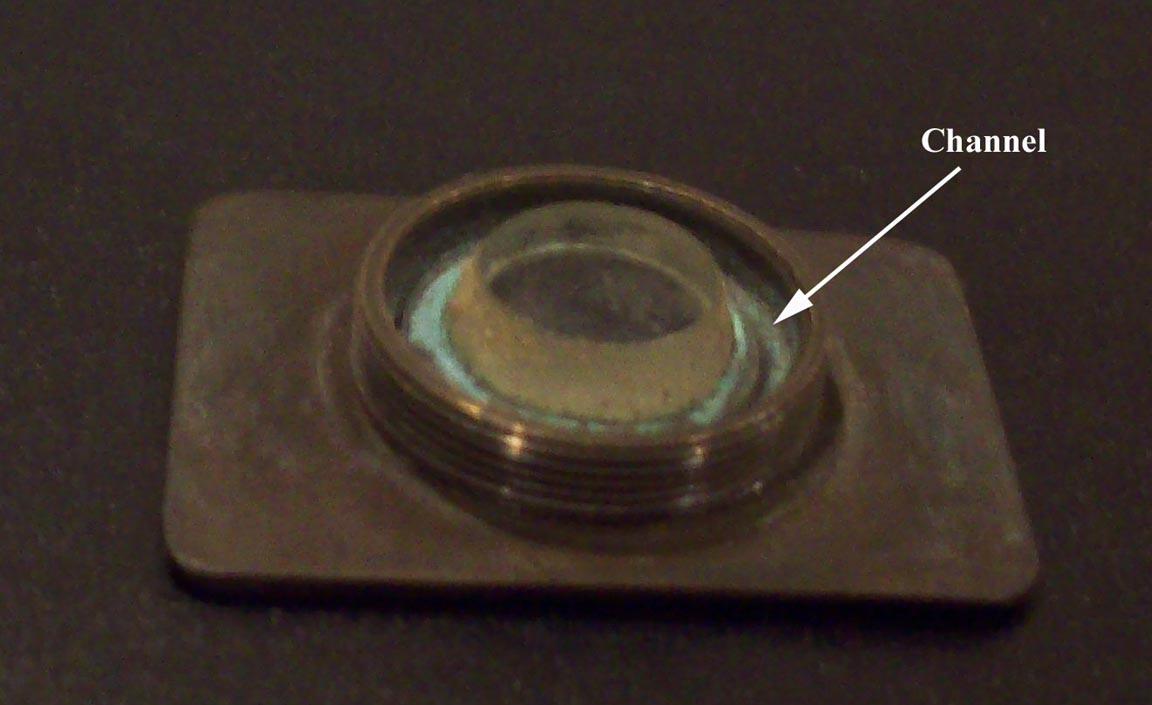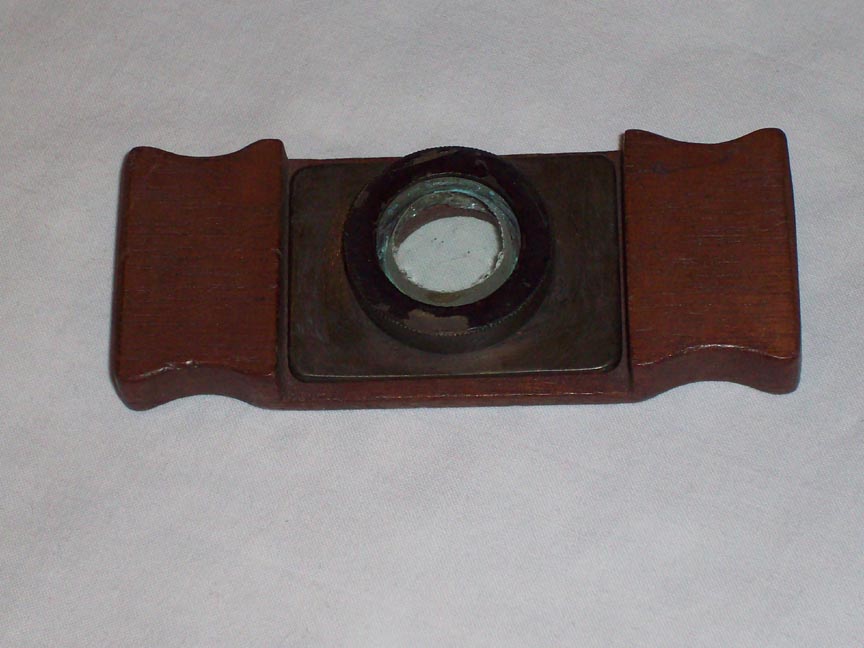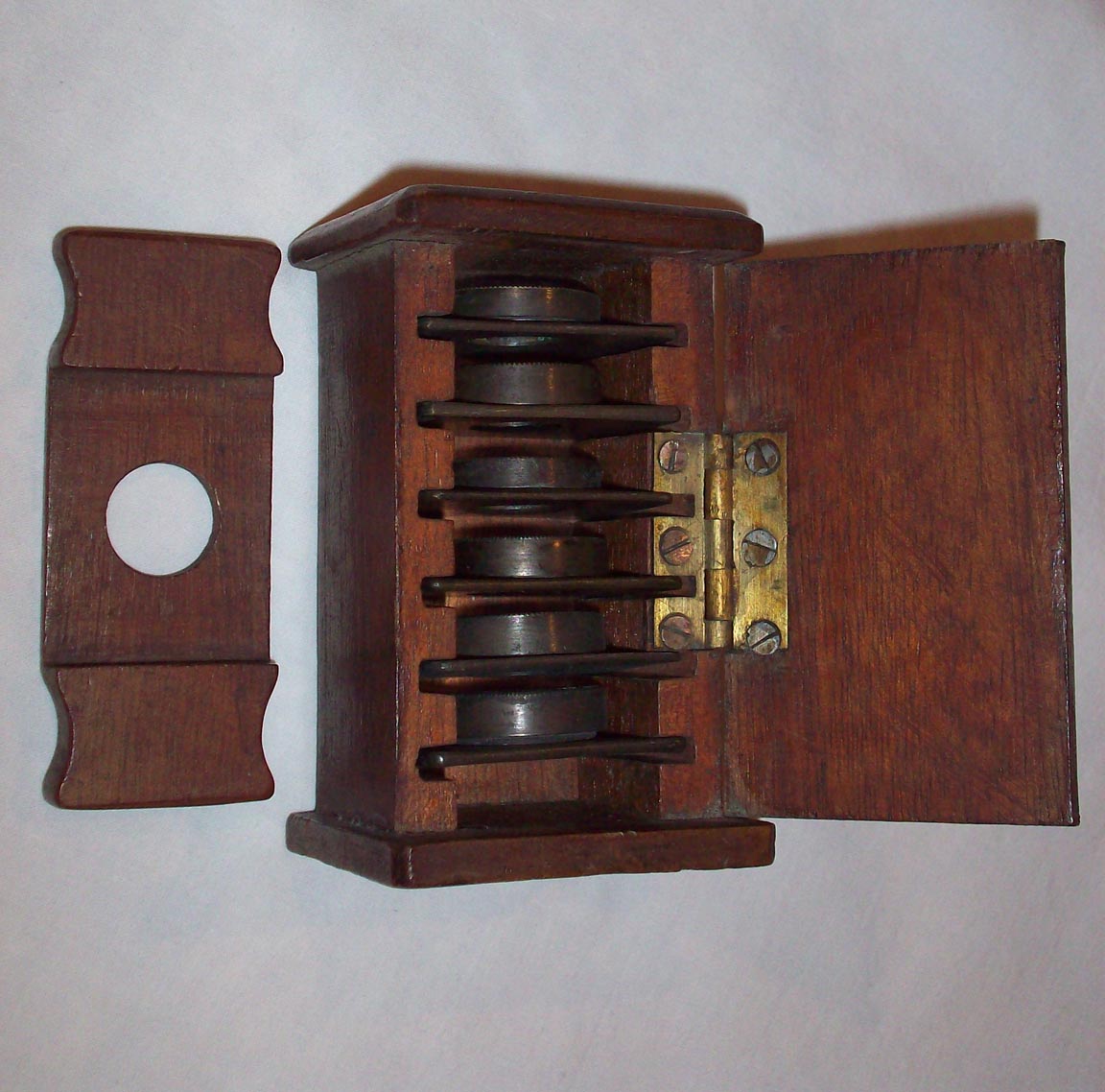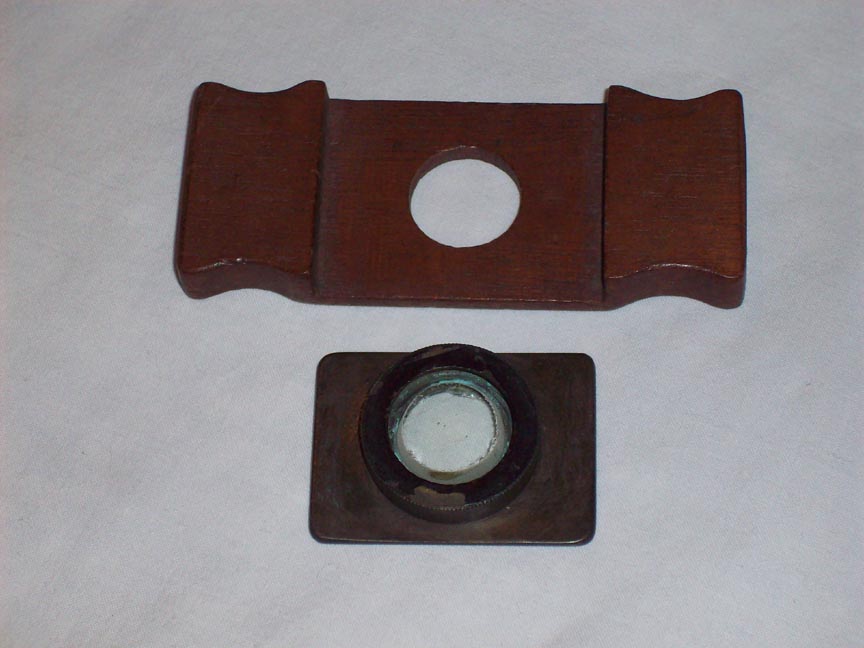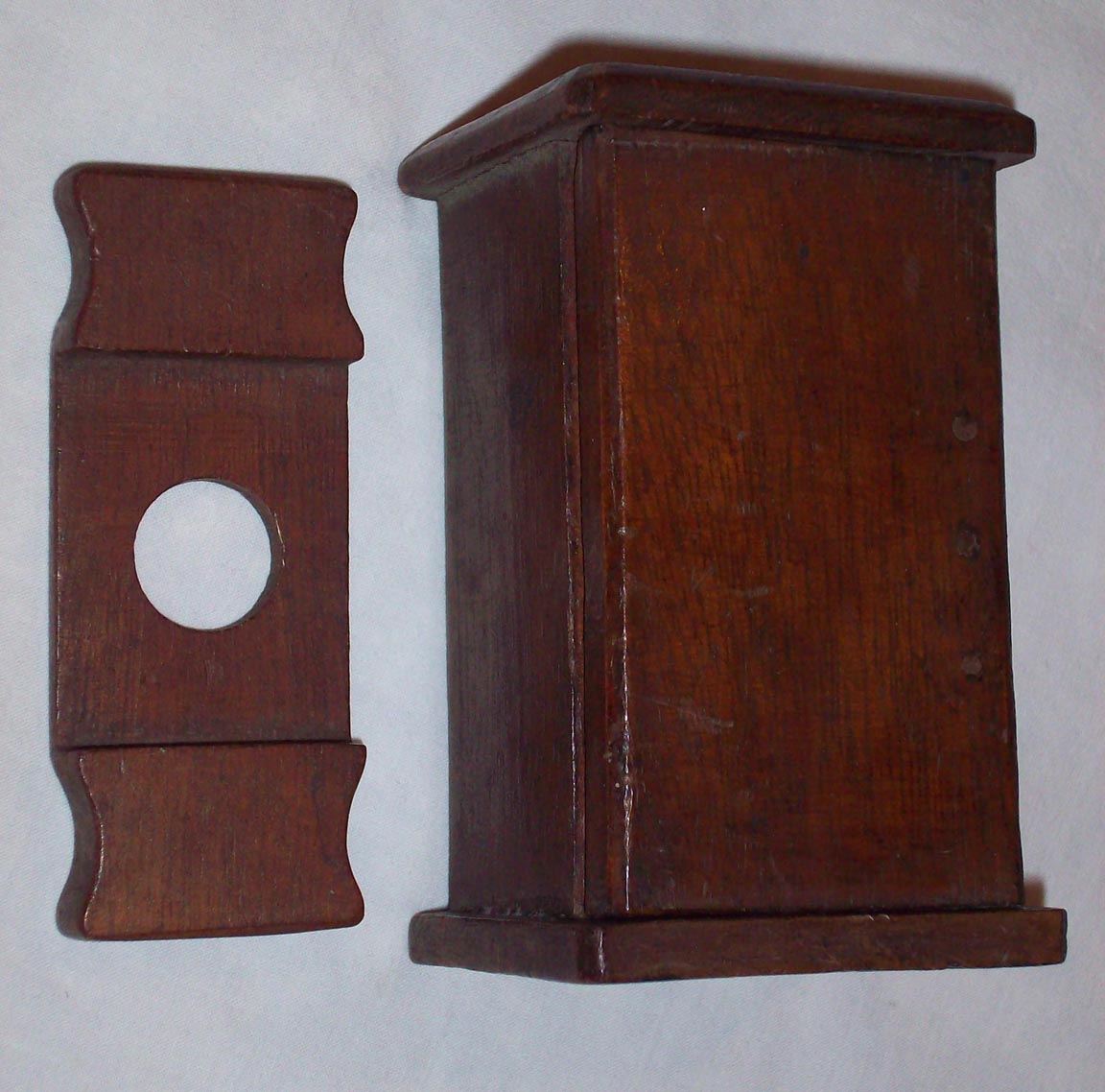VARLEY LIVE BOX
MODEL: 'CAPILLARY TABLET'(Varley), 'CAGE'(Varley), or 'VARLEY LIVE CAGE'
MAKER: CORNELIUS VARLEY
c. 1850
COLLECTION OF: Dr Frank J. Belinskey
This is a set of six live boxes supplied in dedicated wooden case with hinged lid. Each live box measures about 4.2 x 3 cm and is about 9 mm thick. There is also a wooden carrier to hold a live box. The carrier has curves on each end to facilitate holding it securely between the fingers. Each live box is made of brass but blackened to lessen reflections. The lower glass surface, which Varley called the 'tablet' is tapered outward on its sides to lead into a channel around it. According to Varley, these tablets were precision ground using a diamond. The lid of each tablet screws on and according to Varley the clear part of the lid could be made of thin mica ('talc').
A smaller set of two live boxes by Varley is housed in the Whipple Museum and is shown in the Whipple Microscope Catalog as number 380. That set also includes a wooden case, but smaller, to house just two live boxes. The shape of those in the Whipple is different, in that the ends are completely rounded rather than just rounded at the corners. Their length is reported as a remarkably similar 4.3 cm.
Another single Varley live box supplied with Dr de Groot's later Varley microscope is different in that the channel around the base of the tablet is lacking, and that example lacks its top. Its outer profile is shaped the same as those in the Whipple museum however.
The live box is a device that was supplied with microscopes even in the eighteenth century. It is simply a chamber, meant to sit on the stage of the microscope, with a clear top and bottom to allow observation of living specimens, either dry, like a small insect, or in liquid such as would be needed for protozoans. Some are simply a hollow box but others comprise a glass surface on to which the specimen is placed and a cap is then placed over the first wherein a relatively thin layer can be observed. As the cover is brought closer to the bottom, it can act as a compressor. Varley's biggest innovation, something to be copied widely was
the channel cut around the edge of the glass tablet which greatly
improved the usability of the device. His cover screwed on, but this proved problematic and the screw on top was largely replaced by a
press-fit cover (less likely to distort the specimen as a twisting
motion, as required by a screw-on top, might). This device was very
useful for viewing specimens in a liquid medium, but for immobilizing
moving organisms, a dedicated 'Compressorium' or compressor allows more delicate
adjustment of the pressure. Many types of compressorium were devised,
but a rather uncommon and early type is found among the accessories of
the Varley Microscope seen on this site.
Varley described his 'Capillary Tablets or Cages' in the Journal of the
Society of Arts, Volume 48, Part II, pages 343 to 344 in 1831:
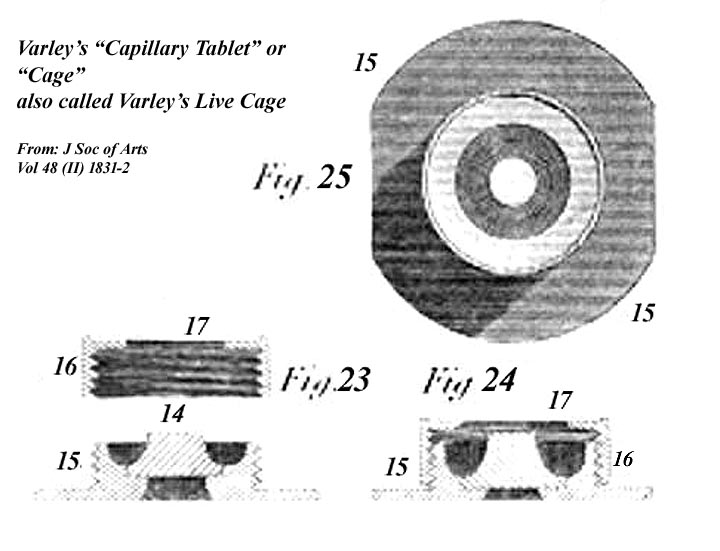
Having limited the stage motion to three or four tenths of an inch,
it becomes requisite to confine the animalculse to a space of that
diameter, and also to a very limited thickness, in order to keep them
within reach, and as near as may be within focus of the highest powers.
For this purpose I have mounted a small glass tablet 14, figs. 23 and
24, which are sections of the same, and fig. 25 is a top view. It is
made of a piece of well-polished plate glass, cemented on a small
chuck, and ground conical at the grindstone, then put to the lathe and
turned with a diamond, keeping it wet all the time by a sponge or cloth
supported at the opposite side so as just to touch it; the upper part
is turned cylindrical, and the base allowed to spread out for the
purpose of being held in the mounting; it is then cemented or burnished
into the neck of the disk 15, which is hollowed so as to leave a clear
space all round the tablet. The aperture under the tablet is of the
same diameter as the top; more or less is injurious. The outside of the
neck is turned with a fine and true screw to receive the screw-cap 16,
which has an aperture through its top one-eighth of an inch larger than
the tablet, to remove all matter from around it. Above this aperture is
a flat recess, as large as the cap will allow, to receive a circular
disk of talc 17, which is to be cemented in; the rim round the talc is
essential to protect it from the fingers when screwing the cap on or
off, but it should be only flush with the talc. The seat should be
moderately broad and very flat, that it may hold the talc quite flat.
The sides of and recess around the tablet, and the whole top of the
disk, should be blackened. The drop of water containing the animalculse
is put on the tablet, and the talc cap screwed on till it touches the
drop and spreads it out as wide as the tablet, and no more ; this
renders it flat, and when put on the stage the objects it contains may
be viewed with great ease and convenience. I call these capillary
tablets , or cages, several of which should accompany the microscope
for the fluid and animalcules; are retained at the top of the tablet only
by capillary attraction, and will bear turning about any how, without
leaving the top, provided it be not suddenly shaken.
